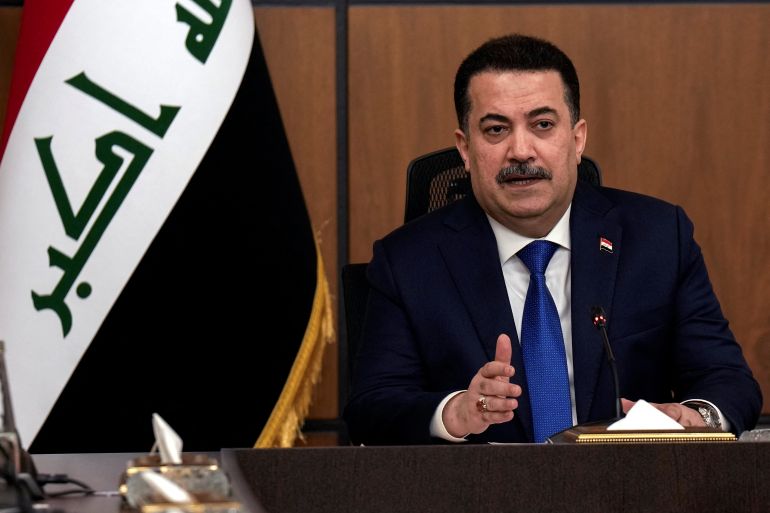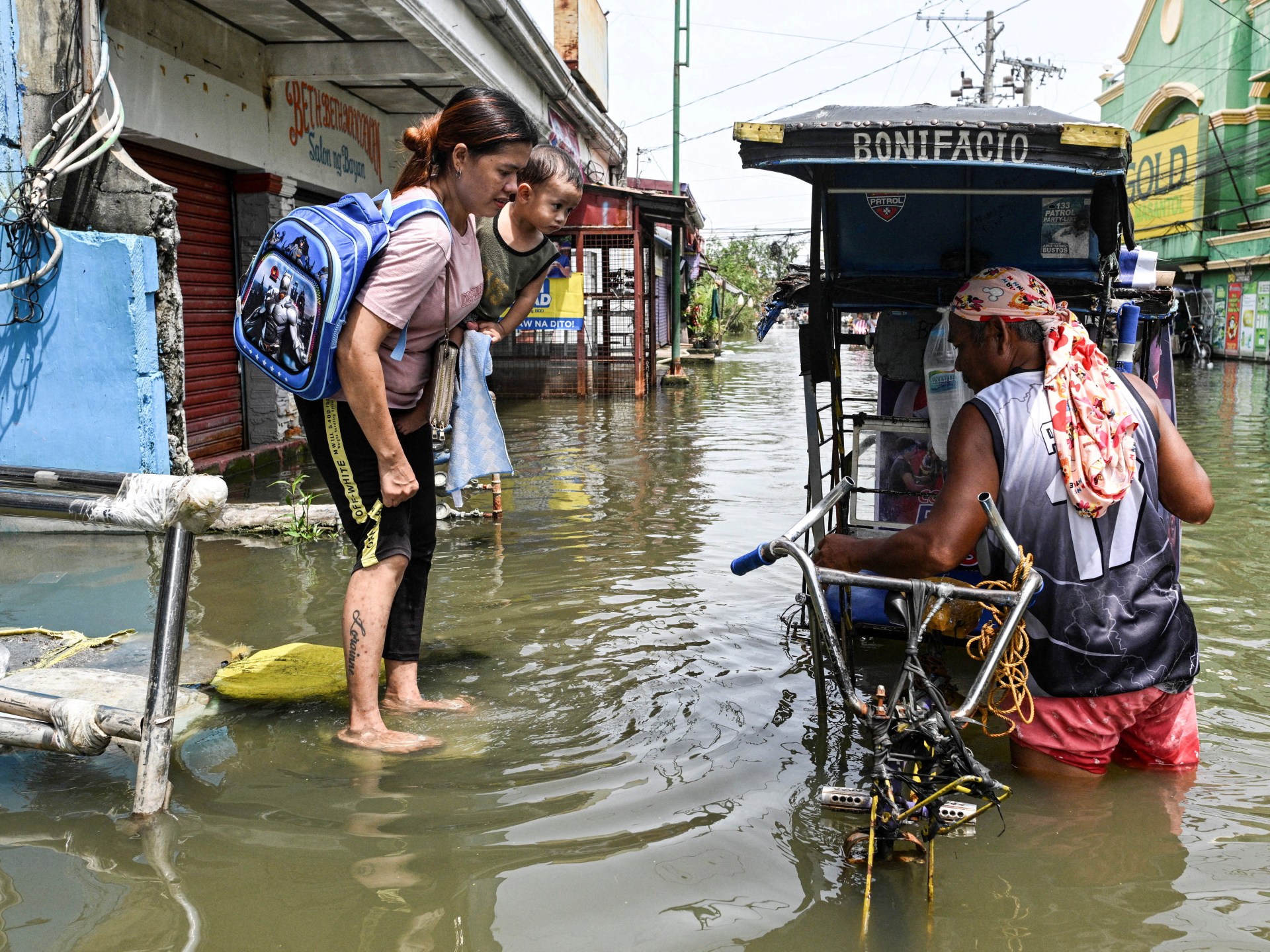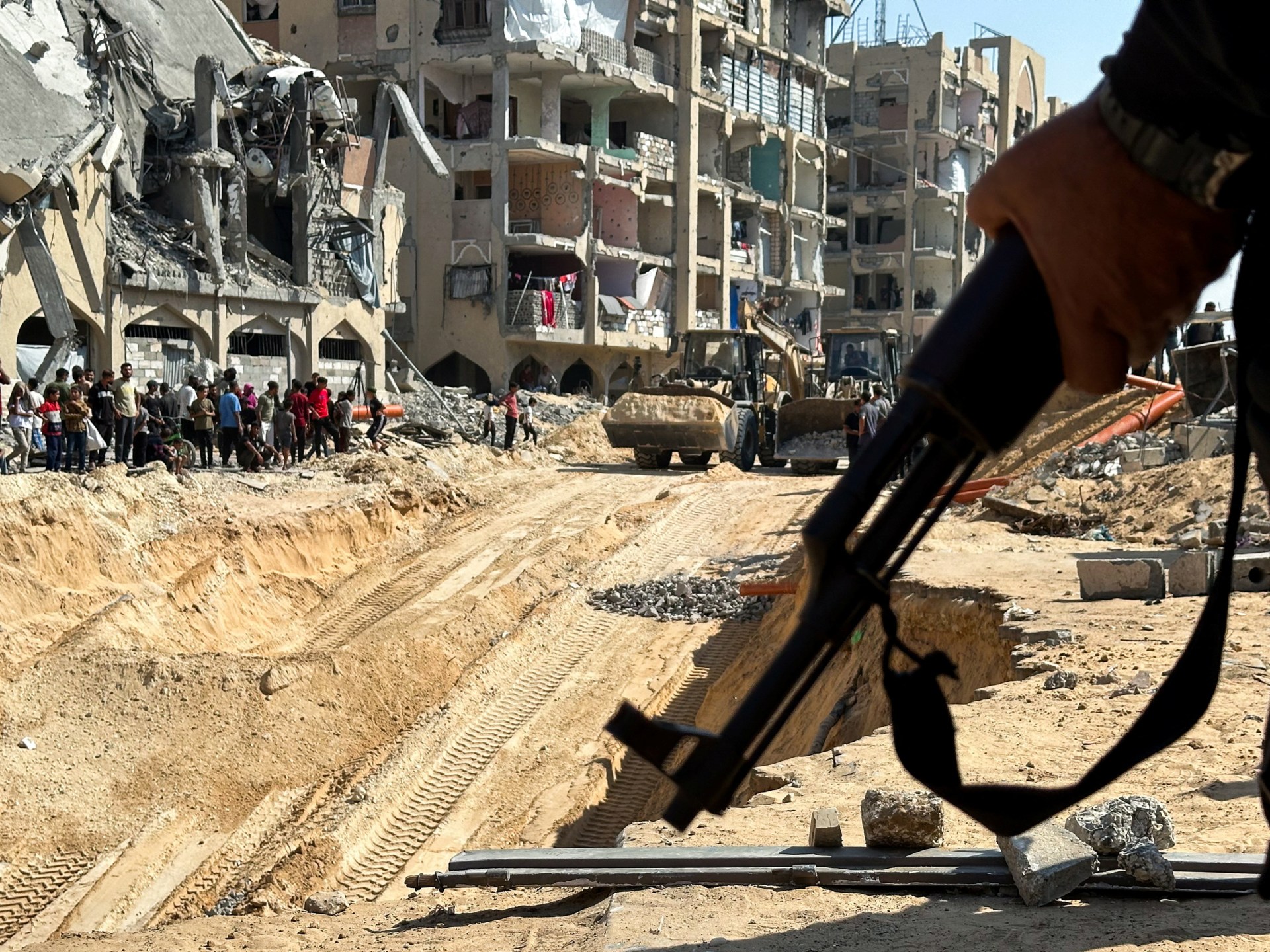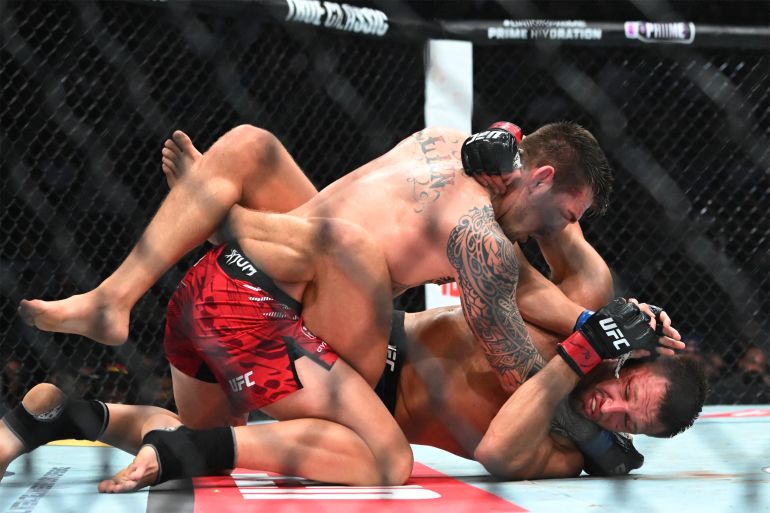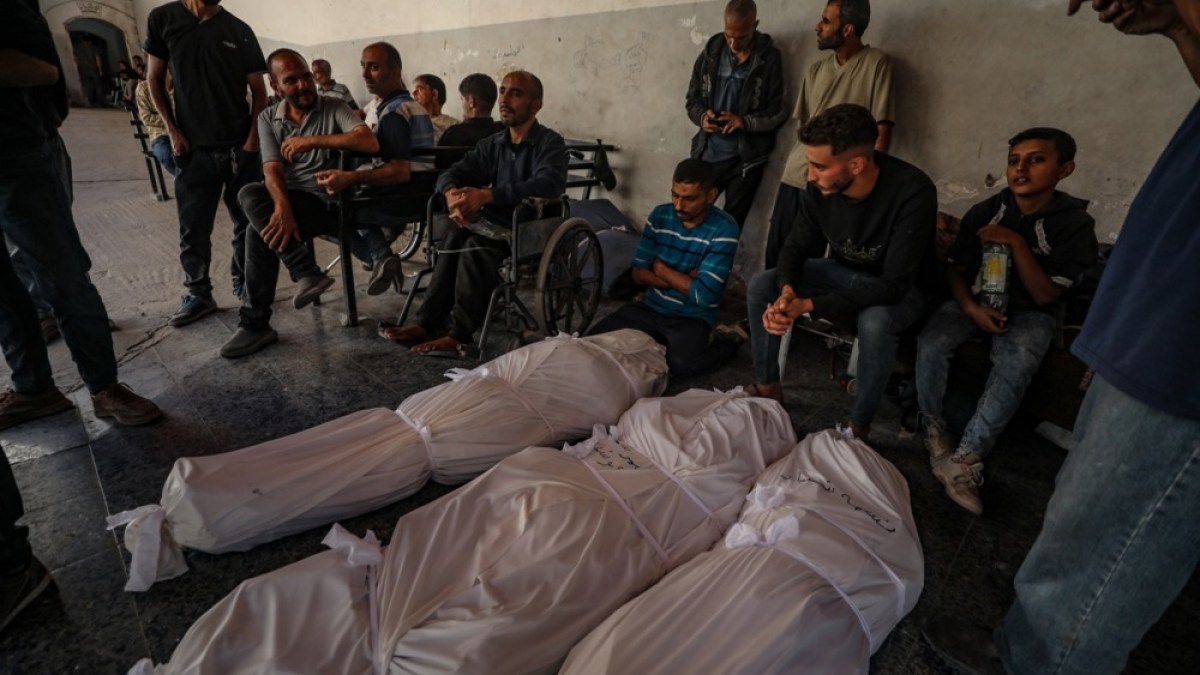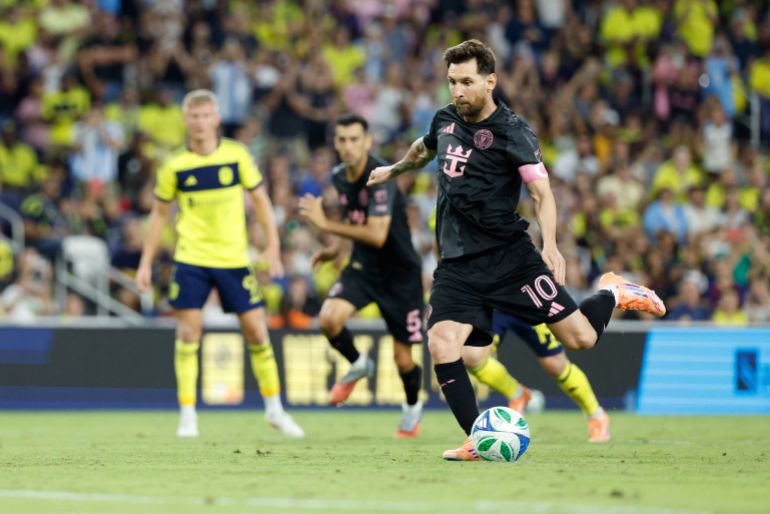In a statement last month, Iraqi Shia leader Muqtada al-Sadr said his movement would boycott the November elections, hinting he wants to “change the faces and save Iraq” – reportedly his endgame since he withdrew his bloc from parliament in June 2022.
He also took aim at political rivals, the Shia Coordination Framework (SCF), a coalition of Iran-backed parties that became the largest Shia bloc in parliament after he withdrew, accusing them of rocket attacks against his allies.
Recommended Stories
list of 3 itemsend of list
Al-Sadr’s statement spoke of demanding no less than total system reform, but did not mention that the Sadrists had in fact held private back-channel negotiations with the establishment to try to re-enter the electoral race, which ultimately failed.
Attempting a return
Al-Sadr’s withdrawal cannot be seen as a total boycott of politics; it is rather a postponement of his ultimate goal of forming a government on his terms.
He seems to be playing a long game, waiting for the state to collapse under his rivals’ governance while positioning the Sadrists as the most organised, unaffiliated power ready to step in.
According to a source close to al-Sadr, speaking on condition of anonymity, the leader had agreed to pressure from key Sadrists who wanted to participate in the election, arguing it would protect remaining Sadrist officials facing pressure in state institutions.
Despite initial reluctance, al-Sadr eventually agreed: The Sadrists would temporarily suspend their three-year boycott, with the understanding that al-Sadr could withdraw again if he chose.
But they would need an extension to the official registration period, which had elapsed, and the source said al-Sadr approved opening channels with Prime Minister Mohammed Shia al-Sudani, who was appointed by the SCF, the biggest parliamentary bloc, to ask for an extension.
The SCF refused, reluctant to see the Sadrists return and compete with its members, especially smaller groups running on their own this year.
But Sadrist politicians kept negotiating for a deadline extension until Al-Sadr undercut his negotiators in July, posting a handwritten note with the hashtag #Boycotters, ending the talks.
2022 – a ‘national majority’ foiled
Al-Sadr boycotted the political process in 2022 after his plan to form a “national majority” government failed in the face of Iraq’s power-sharing agreement, Muhasasa, in place since 2006.
Muhasasa distributes cabinet positions and state resources along ethno-sectarian lines, with all parties in parliament forming the government and receiving executive posts equal to their representation.
Proponents say Muhasasa prevents the return of a dictatorship like Saddam Hussein’s, while critics say it diffuses accountability and is a primary cause of government failure.
In contrast, a “national majority” government is formed by blocs that secure a parliamentary majority of more than 50 percent, forcing other blocs into the opposition with no executive positions.
Sadrists were laying the groundwork for a parliamentary alliance months before the October 2021 election.
The outreach began in April with a first-ever phone call between Al-Sadr and a major Sunni leader, Mohammed al-Halbousi. In June, a high-level Sadrist delegation made an unprecedented visit to Erbil to meet with Barzani’s Kurdish Democratic Party (KDP) for similar talks.
“The agreement was simple: Each party would manage its own region without interference, we would form a government without the other parties, who would be free to form an opposition,” explained a Sadrist source privy to the talks with al-Halbousi and KDP.
Winning 73 out of 329 seats in the election, the Sadrists formed a coalition with the KDP (31 seats), Al-Halbousi’s Taqadum Movement (37 seats), Sunni leader Khamis al-Khanjar and independent MPs to form a 175-seat coalition named Inqath Watan (Saving a Homeland).
But then-President Barham Salih asked the Federal Supreme Court for an interpretation that ended Inqath Watan’s plan.
The court mandated a two-thirds quorum to elect a new president, who would then name the next prime minister, raising the government-formation threshold from 165 to 220 MPs, allowing the SCF to form an “obstructing third”.
Influence without office
The Sadrists have been in every Iraqi government since 2006, fluctuating between 30 and 70 seats, under names including Ahrar Bloc, Sairoon Alliance, and, in 2021, the Sadrist Bloc.
Their influence peaked with the 73 seats they got in the 2021 election, which were allocated to runners-up in their districts, who were mostly SCF, after the bloc withdrew from parliament in June 2022.
With the parliamentary majority in hand, the SCF nominated al-Sudani as prime minister in July.
Al-Sadr, angered by a government formation controlled by his rivals, decided to leverage street power to demand the dissolution of parliament and new elections.
His followers breached the outer checkpoints of Baghdad’s heavily fortified Green Zone, which houses government headquarters, parliament, and foreign embassies and began an initially peaceful sit-in in the parliament.
However, the sit-in escalated as protesters moved towards the nearby headquarters of the Popular Mobilisation Forces (PMF), a state-sponsored umbrella of mostly pro-Iranian armed factions, many of which form the core of the SCF.
The resulting armed clashes ended only when al-Sadr gave a televised speech ordering his supporters to withdraw to prevent further bloodshed.
The SCF-led parliament elected Abdul Latif Rashid, from the Patriotic Union of Kurdistan (PUK), the main political rivals to Sadr ally KDP, as the new president of Iraq.
Al-Sudani was tasked with forming a cabinet and quickly won a vote of confidence from parliament.

The SCF’s growing list of troubles
The SCF consolidated its grip, removing key Sadrist officials, including the Central Bank governor and the governors of Amarah and Najaf, and pursuing vendettas against al-Sadr’s allies, even allegedly through Iraq’s judiciary, which experts have accused of being politicised.
As Inqath Watan worked to form a government, the Federal Court annulled the Kurdistan regional government’s 2007 oil and gas law and all energy contracts signed under it. The lawsuit had stalled since the oil ministry filed it in 2019.
In November 2023, the Federal Court expelled Mohammed al-Halbousi from parliament, ending his speakership after the tripartite alliance re-elected him in January 2022.
Yet other aspects of its governing have not been successful, with an internal economic crisis looming and external pressure building.
The Iraqi government faces an exorbitant domestic spending bill, with public sector salaries, social welfare and pensions adding up to 44.9 trillion Iraqi dinars in the first half of 2025, 99.2 percent of all oil revenues – Iraq’s main source of income – during the same period.
Externally, the government faces Israeli threats and claims that it hosts Iranian militias, as well as a cascade of US sanctions targeting private Iraqi banks and individuals, accusing them of supporting Iran.

A Sadrist endgame
In the meantime, al-Sadr has worked to shore up his support among Iraqi Shia, building on his membership of one of the most respected Shia families. He also rebranded his group as the Patriotic Shia Current in April 2024.
His pressure on the SCF within their shared Shia constituency has seen him mobilising on issues the SCF could not disagree on without damaging their own religious credentials.
He also made a foray into Baghdad’s Tahrir Square and Nasiriyah’s Haboubi Square, important sites for the 2019 Tishreen protest movement, which al-Sadr was accused of trying to take over and subsequently abandoning to face government security forces alone.
During 2025 Ashura, al-Sadr set up tents with food and refreshments for pilgrims in the two squares, something no political faction had dared do for fear of backlash from anti-government protesters.
Regionally, he has positioned himself to avoid entanglement and build a profile distinct from the threatening rhetoric of his SCF rivals.
He endorsed the regime change in Syria and limited his response to the war in Gaza to condemnations and statements, positioning himself as a viable, predictable future partner in the eyes of Western powers like the United States and regional actors like Saudi Arabia, the UAE, and Qatar.
Whether Iraq will enter paralysis triggered by US sanctions, Israeli attacks, or economic crisis remains to be seen.
